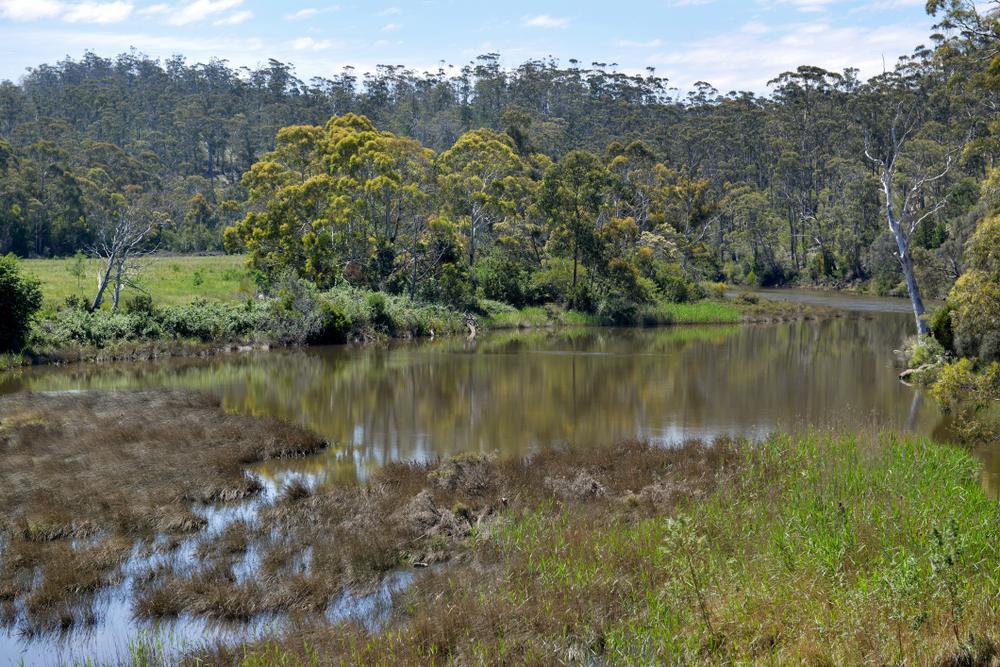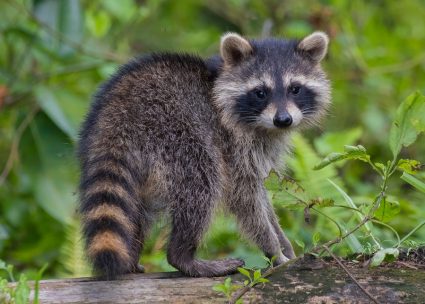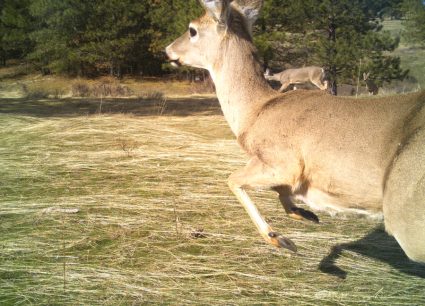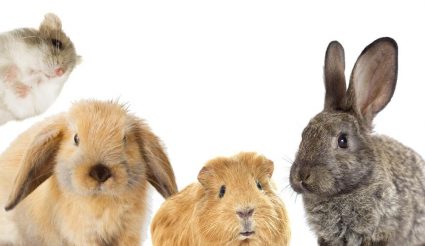
Coyotes are highly adaptable creatures that have made their way into urban and suburban environments. Knowing how to identify their presence is crucial to coexist peacefully with them and to protect pets and livestock. In this comprehensive guide, we’ll cover the key signs to look for in your surroundings to determine if coyotes are in your area.
To tell if coyotes are in your area, listen for their unique vocalizations, such as howls, yips, and barks, especially during the night. Look for their oval-shaped tracks, often in a straight line, and their twisted, rope-like scat that may contain fur and bones. Changes in local wildlife behavior, such as increased vigilance, and property damages, like predation on livestock or pets, can also indicate their presence.
Recognizing Coyote Sounds
Coyotes communicate through a variety of sounds, including howls, yips, barks, growls, and even screams. Howling, often heard during the night, is used to keep the pack connected, deter rival packs, and locate potential mates. Yipping is a high-pitched vocalization used for communication within the pack, while barking is used to warn of potential threats. Growling is a low, guttural sound used to express aggression or dominance within the pack. Recognizing these unique vocalizations can be a key indicator of coyote presence.
Identifying Coyote Tracks
Coyote tracks are oval-shaped and typically measure about 2.5 inches long by 2 inches wide, featuring four toes with claws on both the front and hind feet. The front feet are larger than the hind feet, and the footpad is roughly triangular-shaped. Unlike domestic dogs, coyotes often walk or run in a straight line, with each paw print almost directly in front of the next. Look for these tracks around your property to indicate a coyote’s presence.
Examining Coyote Scat
Coyote droppings, also known as scat, are typically twisted and rope-like, with tapered ends. They measure approximately 3/4 to 1-1/2 inches in diameter and 3 to 5 inches long. Unlike domestic dogs, coyote scat often contains fur and bones from prey animals. Finding such droppings can be a strong indication of coyotes in your area.
Noticing Changes in Wildlife Behavior
Changes in the behavior of other wildlife can often indicate the presence of a predator like a coyote. Increased vigilance and wariness in prey species, such as rabbits, rodents, and birds, can be a sign. Domestic animals, such as livestock and pets, may also become more anxious or defensive.
Observing Property Damages
Coyotes can cause various types of damages that may indicate their presence. This includes predation on livestock or pets, scattering of human garbage, chewing on leather or treated compounds, and leaving teeth or claw marks on various surfaces such as irrigation pipes.
Preventing Coyote Attacks
To prevent coyote attacks on pets or livestock, it’s crucial to take proactive measures. This includes not feeding wildlife, trimming back trees and bushes, installing coyote-proof fencing, keeping pets indoors at night, and using guardian animals to protect livestock.
Understanding Coyote Behavior
Understanding coyote behavior can help in identifying their presence and preventing conflicts. Coyotes are most active during dawn and dusk, and during specific periods like the breeding season and when pups are becoming independent.
Dispelling Misconceptions
There are several misconceptions about identifying coyotes. For instance, seeing a coyote during the day doesn’t necessarily indicate rabies, and their vocalizations do not necessarily indicate a successful kill.
By understanding these facts and dispelling the myths, we can better coexist with coyotes and appreciate their role in the ecosystem.
In conclusion, identifying the presence of coyotes in your area involves observing sounds, tracks, scat, changes in wildlife behavior, and property damages. Taking preventive measures and understanding their behavior can help in peaceful coexistence. Remember, every animal has a role to play in our ecosystem, and coyotes are no exception.
Frequently Asked Questions
What do coyotes eat?
Coyotes are omnivores. Their diet consists of a variety of food sources, including rodents, rabbits, birds, insects, fruits, and vegetation. They are also known to eat carrion (dead animals) and can prey on small pets or livestock.
Are coyotes dangerous to humans?
While coyotes are generally not a threat to humans, they can become aggressive if they feel threatened or if they are sick. It is essential to keep a safe distance and never attempt to feed or pet a coyote.
What time of year are coyotes most active?
Coyotes are most active during spring and summer, especially during their breeding season and when their pups are becoming independent. However, they can be seen at any time of the year.
How can I discourage coyotes from coming to my property?
There are several ways to discourage coyotes from coming to your property. These include not leaving food or garbage out, keeping pets indoors at night, installing coyote-proof fencing, and using noise or light deterrents.
What should I do if I encounter a coyote?
If you encounter a coyote, it’s important to make yourself appear larger, make loud noises, and back away slowly. Do not turn your back or run, as this might trigger a chase instinct. If the coyote continues to approach, throw objects in its direction (not at it) to scare it away.












